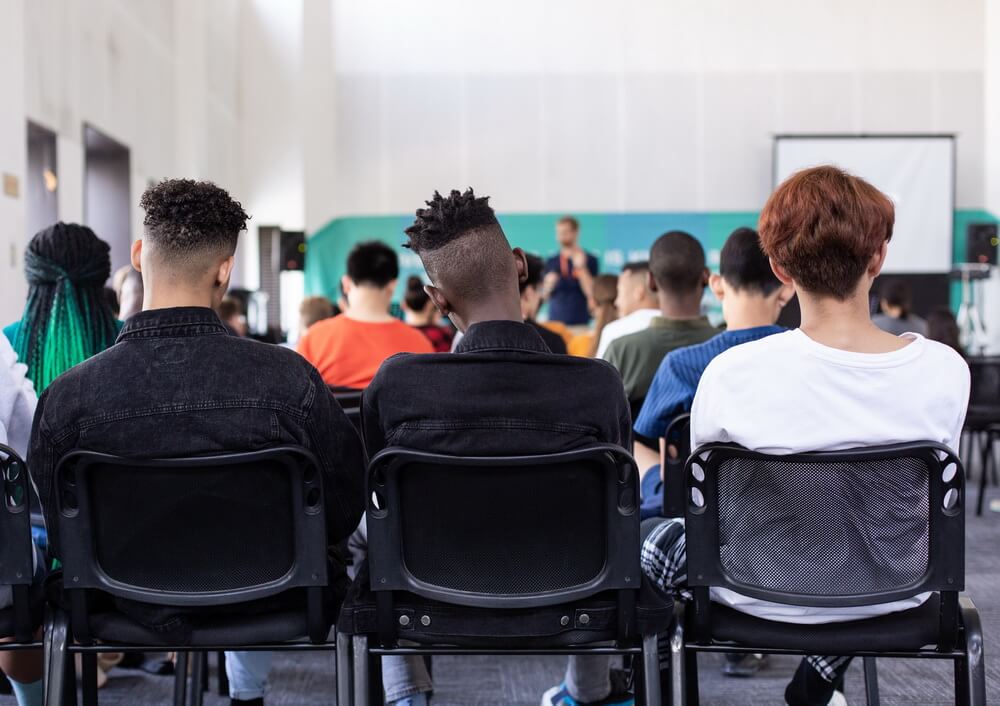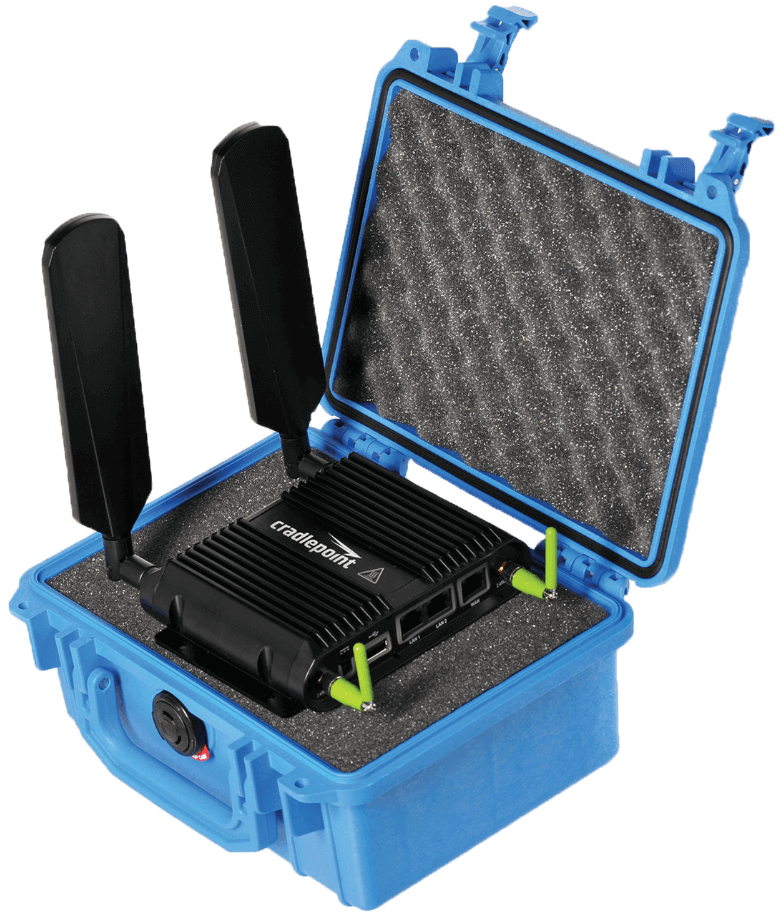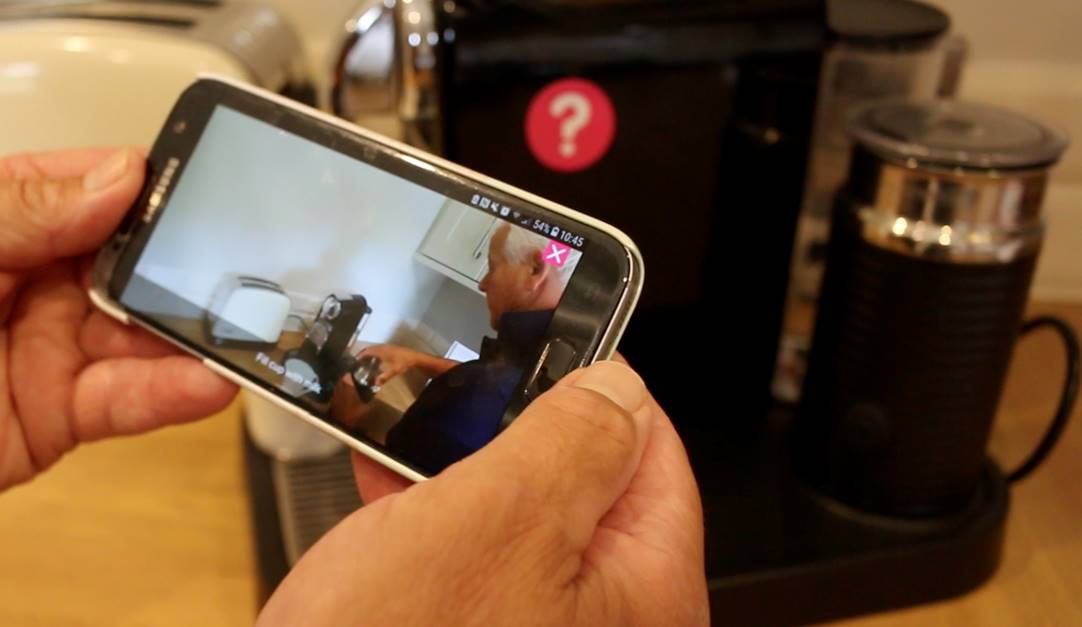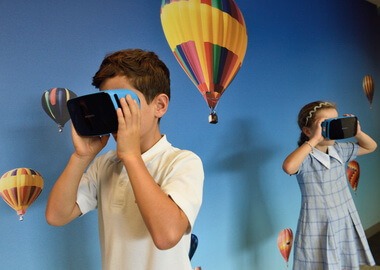How IoT Is Used in Education: IoT Applications in Education
Education is not yet among the most common IoT applications. Students, teachers, parents, and other stakeholders are wary when it comes to implementing connected e-learning solutions.
However, as the Internet of Things platforms become more widespread and cheaper to adopt, campuses, schools, and other institutions are leveraging the technology’s potential. From improving campus attendance to ensuring in-class productivity, IoT has dozens of promising applications in education. We will examine the IoT trend for education in detail in this post.

Table of Contents
- What Problems Does IoT Solve in the Education Industry?
- Benefits of IoT in Education
- Challenges of IoT in Education
- Examples of IoT Applications in Education
- Education Solution with Digiteum
What Problems Does IoT Solve in the Education Industry?
According to studies, over 1.6 million Americans are currently home-schooled. Not only that, but 47% of the country’s parents are dissatisfied with the quality of K-12 education. Kids don’t feel any better. Here’s what statistics show:
- 70% of students feel bored at school all the time;
- 80% of surveyed kids feel constant stress;
- 75% of school-attenders answered a ‘How are you doing’ question with a negative reply.
Why are children and parents unhappy with what educational institutions have to offer? Most likely, the following issues take the blame:
Outdated curriculum
Despite the obvious technical advancements, a fair share of schools continue to use outdated teaching practices, paper textbooks, and curriculums that aren’t much different from the ones we had centuries ago (math, writing, reading, foreign languages, history, and science). There is little-to-no room for acquiring new skills needed to stay competitive in the workplace. According to the World Economic Forum, the skills that are crucial for the future workforce are not yet or rarely taught at school:
-
- Computer science and engineering;
- Collaboration and ethics;
- Problem-solving and logic;
- Creativity.
As a result, when a young high school graduate enters the workforce or chooses a career path, they struggle to match the outdated skill set against the demands of the rapidly-changing job market.

Standardized testing
Standardized exams are considered an objective way to assess students’ skills and competencies. The reality is, such assessments are not immune to bias and do a lot to promote inequality at educational establishments. In ‘34 Problems With Standardized Tests’, The Washington Post emphasizes the impact of the following issues standardized testing brings forth:
- Those who can afford test prep classes typically have higher scores;
- Tests don’t offer classroom teachers much relevant feedback on the way students learn and process information;
- Standardized exams don’t promote creativity among students, encouraging sticking to tried-and-true patterns instead;
- Exams are conducted under unreasonable pressure that often affects a test taker’s performance;
- High, potentially life-changing impact of failure.
Poorly educated teachers and professors
According to studies, teachers have a lot of power in determining students’ lifetime earnings and social status. It turns out, for every twenty students a poorly-skilled teacher instructs, that professional subtracts $500,000 per year. As a result, students who are stuck with under-trained professionals have lower odds of entering competitive colleges and finding lucrative jobs.
The US suffers from significant education talent shortages. There aren’t enough pre-school and special education professionals to provide kids with basic memorization, comprehension, and problem-solving skills. Attracting young talents to education, ensuring successful re-skilling, and continuous learning throughout teachers’ careers is needed.
Low classroom engagement
The traditional ‘lecture, discuss, test’ approach is not likely to engage students and improve information retention. Outdated teaching methods prevent education professionals from adopting active interaction-based learning or personalizing the curriculum. While slow-learning students start losing concentration in class because the information is too challenging to process, academically inclined ones are not interested in following the lesson either, as the concepts are not stimulating enough and boring.

On-campus safety
Legislation like the Clery Act spread awareness of safety importance at educational facilities. Unfortunately, most schools don’t have the infrastructure to detect red flags for theft, abuse, sexual assault, and other crimes that occur within the institution. Nor do they have a contingency plan that could be implemented once a threat is pinpointed.
As of February 2020, there have been seven school shootings across the US, claiming the lives of many people and injuring many more. The huge number of shootings that occur across the country every year is a declaration of the need to come up with new protection and prevention means for high school students.
Benefits of IoT in Education
The implementation of technology gives education professionals new tools to optimize classwork, improve the efficiency of the learning process, connect with students better, and ensure on-site safety. Here are the benefits of putting the Internet of Things and education into a unified framework:
- Improved school management efficiency. Managing an education institution requires filling in a lot of paperwork, keeping track of supply management, and distributing funds properly. IoT solutions lay the groundwork for faster, risk-free, and interconnected decision-making framework where all the stakeholders (teachers, students, parents, public officials) are engaged in improving the state of the facility.
- Real-time data collection. IoT allows processing terabytes of data simultaneously, opening a lot of applications for schools and colleges — safety tracking, student progress monitoring, overseeing the professional training of teaching specialists, and many more. Ministries and principals could use real-time data to improve the efficiency of testing and grading or when looking for new ways to improve classroom engagement.
- Improved resource management. IoT in education helps establishments run more efficiently, reducing operating and storage costs in the long run. Additionally, facility managers can employ connected IoT devices for education to ensure energy or water consumption efficiency.
- Global interconnectedness. The global nature of IoT helps education professionals create uniform teaching standards and ensure equally efficient school and college training worldwide. The Internet of Things can support global peer-to-peer professional training tools, where educators all over the world can exchange tips and best practices. Students, on the other hand, will be able to share learning materials internationally, improving the accessibility of education all over the world.
- Addressed safety concerns. The Internet of Things has an array of security applications schools, colleges, and pre-schools could benefit from. Among them are on-demand video-monitoring tools, student escort drones, smoke and vaping sensors, etc. These platforms bring parents and students more confidence in the safety of their learning environment, help promote positive habits and make it easier for facility managers to keep the institution in order.

Challenges of IoT in Education
Although there are many benefits of IoT in education, public officials and institution managers need to acknowledge the challenges of IoT in education. Education professionals will need to overcome the following issues before IoT can be fully introduced to pre-schools, classrooms, and lecture halls.
- High implementation cost. Implementing IoT solutions for education requires significant hardware and software power. To deploy a custom platform, or a connected device, public offices or school principals would have to hire a robust tech team skilled in software development, data science, and other fields. Hardware license fees and maintenance costs are other factors that increase the cost of an IoT product. Unfortunately, not all publicly funded schools can afford such expensive innovations and design custom IoT solutions.
- In-class ethics. Other than offering new ways to handle assignments and grade knowledge, an IoT-based tool needs to provide mechanisms that help prevent cheating, plagiarism, or other forms of academic dishonesty. Before implementing global IoT-based data sharing systems, the worldwide tech community needs to design a framework for fighting fraud and ensuring all shared data is tamper-proof.
- Lack of data processing infrastructure. When implementing IoT solutions, public office workers and educational facility managers need to choose a reliable computing platform and data tools. The on-premises infrastructure some institutions adopt for data storage is likely too outdated and unstable to empower connected IoT-based solutions.
- Security and privacy concerns. This is one of the major IoT development challenges. Collecting and processing various forms of digital data will put educational institutions on the map for hacking threats. Before deploying an IoT solution, project stakeholders need to build a contingency plan for data breaches, security attacks, and other threats. Increasing awareness regarding the importance of data security among students is an essential part of the innovation implementation process.
Are you looking for ways to optimize project implementation costs and develop a quality edtech product on time and on budget? Learn why, where and how to hire offshore developers for your project and how to benefit from nearshoring/offshoring strategy.
Examples of IoT Applications in Education
After examining the IoT impact on education, let’s take a look at the solutions that are deployed in schools, kindergartens, and colleges around the world.
EdModo — connected communication platform
IoT has a lot to offer when it comes to connecting different industry players. EdModo is a connected platform that helps teachers, students, and parents share advice, learning materials, keep track of students’ progress, and improve the efficiency of education inside and beyond the classroom. The tool has been running for twelve years now and is one of the poster cases of IoT in education.
C-Pen — improving student engagement
C-Pen is a portable scanner tool that helps students share anything they write online or save it as a smartphone picture. The device is portable and easy to use. By bringing a C-Pen to classes, students can ensure that no lesson or lecture notes will be lost.
The device offers many more intriguing features. It highlights the definition of a chosen word, helps create memos, can translate it to over forty languages, and pronounce it correctly. The tool facilitates the education process for people with learning difficulties as well.

LocoRobo — improving teaching efficiency
Locorobo is an IoT application in education that helps programming students learn how to design Python, Java, JS, or C apps much faster. Using a connected tool that learns from its interactions with students to optimize the curriculum, people of all ages (K-12 and college attendees) can learn the basics of robotics, start coding for drones and design functional wearable applications. There is a connected coding platform and a lesson library that helps STEM teachers access and share worksheets or lecture notes, as well as monitor the learning progress of each student.
Magicard — collecting all relevant student data
Implemented in the UK, Magicard helps consolidate all information needed to provide school attendees with excellent educational standards. These smart cards help monitor attendance, provide access to medical and transportation facilities, and allow the user to pay for goods in the cafeteria without having to carry cash around. Each tag is fully traceable and can help determine the student’s location. Currently, the following smart card types are available:
- Payment cards;
- Logical access cards;
- Physical access cards;
- Time and attendance cards;
- Health data cards.
Kajeet — high school bus safety
Ensuring safe and comfortable student transportation is a priority for most community managers. Tools like Kajeet help raise the bar for school bus system efficiency. The platform allows drivers to monitor the behavior of passengers onboard; Wi-Fi connectivity allows students to turn on homework or access learning materials on their way to school. Kajeet also allows parents to monitor their child’s location in real-time and be confident that they made it to school safely.

University of New South Wales Platform — efficient resource management
The institution leveraged the power of IoT for education to track and optimize energy consumption. The program collects real-time power data for HVAC systems and controls lighting, heating, and cooling remotely to avoid energy waste and reduce university operating costs. Based on the insights provided by the platform, facility managers can predict energy consumption spendings with astonishing accuracy and allocate budgets more intelligently.
Carnegie Mellon University — using IoT to improve student life
The establishment uses the Internet of Things to help students optimize transportation, plan their schedules, and enjoy the time inside and outside the lecture hall. Thanks to connected systems, students can find out if there’s a bus stop near their location, if the laundromat is open, or if there’s a study room available. All the data is collected in real-time and shown on interactive web portals for students.
Read: Website vs web portal: what works best for your organization
VT Alerts — improving on-Campus safety
The platform, implemented at colleges in Virginia, helps identify potential security-threatening situations, sends immediate alerts to all students in case of an on-campus emergency, and optimizes the lighting around the campus so that the residents don’t have to walk through poorly-lit streets after classes. Implementing VT Alerts is relatively easy. All you would need is a smartphone or a smartwatch to use the platform.
Illuminated escort drones make sure students get home safely
It’s common for parents to be worried when a child is coming back home from school in the evening. A lot of families still choose to pick children up rather than letting them wander dark streets at night.
The good news is, tools like IoT-enabled escort drones make it easier to get home safely and comfortably. Students can summon a drone on their way back from school via a smartphone and a drone machine equipped with small lights will illuminate the street. By adopting such an innovation, families reduce the risk of children getting injured in a pedestrian accident, attacked, or kidnapped. The drone also makes it less scary for primary and middle school students to return home after classes.
How Do I — optimizing education for people with learning difficulties

At Digiteum, we built the ‘How Do I’ app which helps include people with learning difficulties in education or employee onboarding. Although the tool doesn’t use the Internet of Things, it’s one of the exemplary ways to integrate tech innovation into education.
The tool uses NFC technology to help those diagnosed with autism and other learning difficulties get practical guides on how to use daily objects and handle mundane tasks, such as cooking, cash withdrawal, moving between locations, etc. A user-friendly interface and gamification integration make the tool engaging and classroom-friendly.
Education Solution with Digiteum
Education is a highly lucrative field in the Internet of Things adoption. The array of potential IoT applications in education to explore is almost endless — starting from preschool education to revolutionizing Ph.D. research programs.
Regardless of whether you want to build a custom solution for your local community or commercial distribution, you’ll need an experienced tech team to help you implement your idea with the best time to market ratio. If you are considering tech partnership, contact Digiteum. We’re happy to help you build a secure, reliable and impactful IoT platform for education. Here’s what you can expect from collaborating with Digiteum:
- Fast to-market delivery;
- Award-winning technology;
- Continuous assistance and support;
- Robust technology stack;
- High educational domain knowledge.
Check our IoT application development services and contact Digiteum to get a free consultation.




